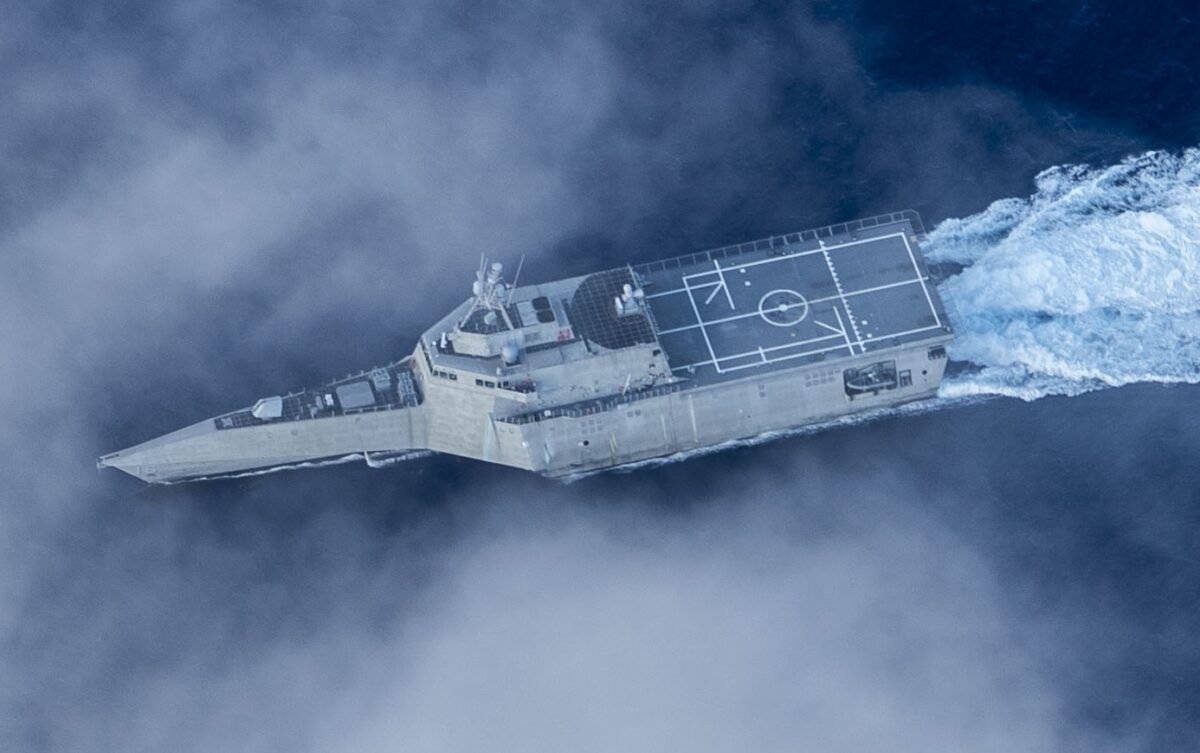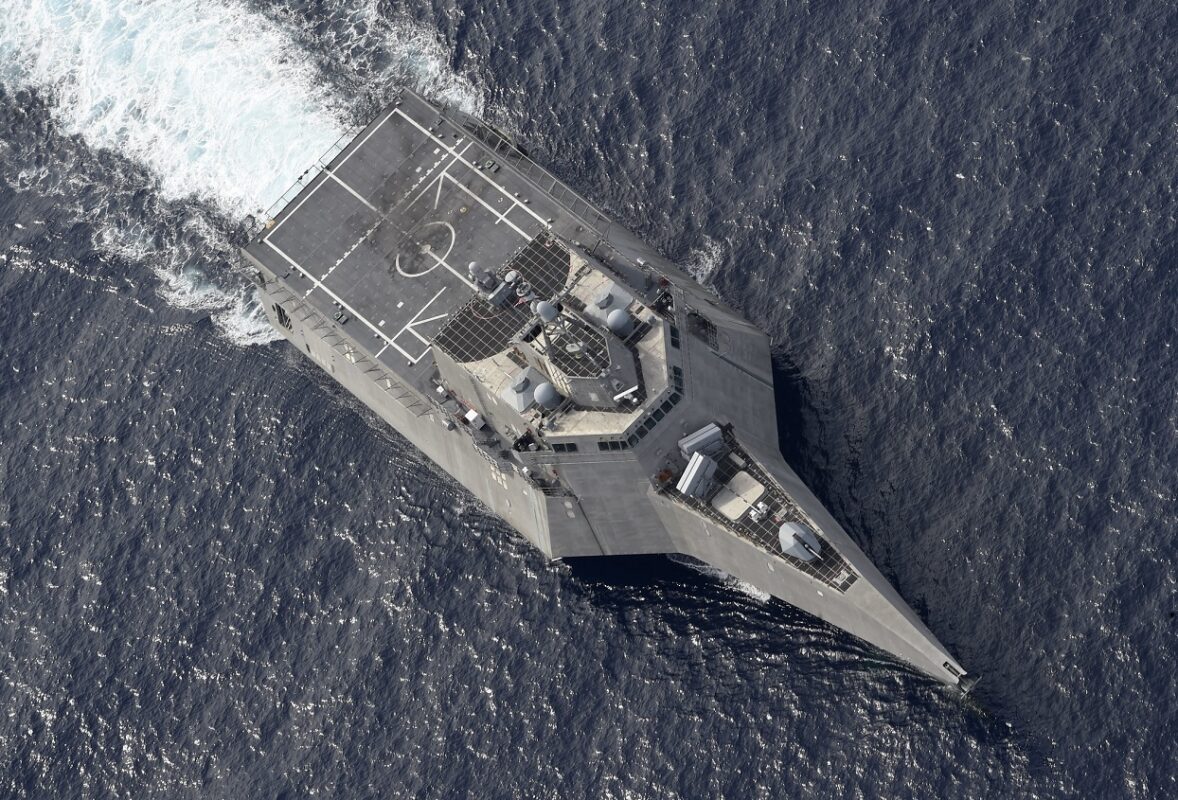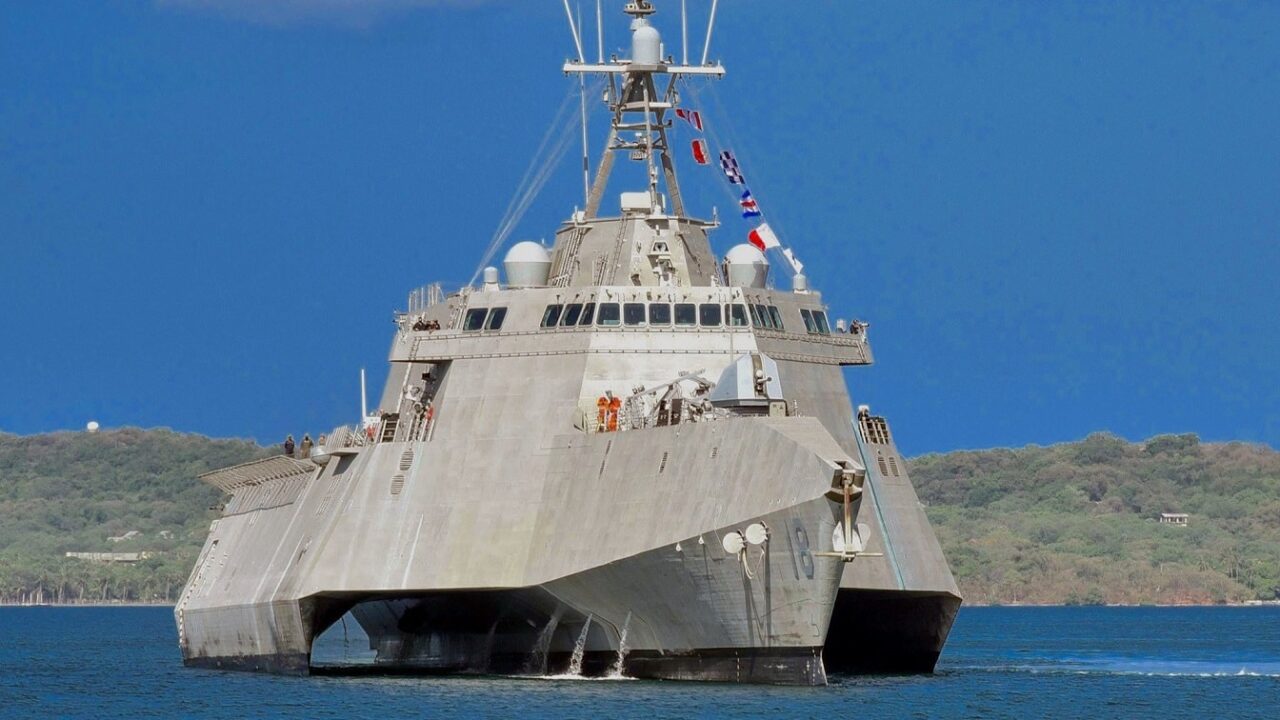U.S. Navy Looks to Cut Littoral Combat Ship Fleet – A common misconception from some is that the U.S. military always wants more. That is not exactly true, and oftentimes, the armed services are forced to keep some platforms in operation due to decisions made by lawmakers in Washington. This week, the United States Navy made clear that it would seek to decommission nine of its Freedom-variant Littoral Combat Ship, while also eliminating the anti-submarine warfare (ASW) missions for the combat vessels.
In total, the Navy called to scrap 24 of its vessels as part of a budget proposal and use the savings to modernize the rest of its fleet.
Littoral Combat Ship – Scuttling a Problem
There is little room in the ranks of the U.S. Navy for the Littoral Class Ships (LCS), which has been long seen as a platform seeking a problem rather than addressing one. Just fifteen years after entering service, a number of the warships have already been retired from service, and the Navy looks eager to cut even more.
When the first of the LCS vessels entered service the U.S. military was very much engaged in the Global War on Terror (GWOT), and the ships seemed ideally suited to the task. They could operate close to shore against missile-firing boats and small submarines. Fast and agile, it was envisioned that they could be a stealthy surface combatant capable of defeating those anti-access and asymmetric threats in littoral or near-shore waters.
The LCS concept was further meant to emphasize speed, flexible mission modules, and operate where larger warships couldn’t.
All of that sounded good in theory, yet in practice, the ships were prone to breakdowns and defects. Congress then cut funding from the mission modules, which were originally designed to be easily swapped out based on mission need. Surface warfare was the only package fully deployed, and that left the U.S. Navy with small and fast ships that really weren’t up to the task in the changing geopolitical world.
According to some accounts the LCS came to be known as the “Little Crappy Ships” by some U.S. Navy sailors. There have even been rumors that the Navy might seek to decommission the entire Freedom-class, which has required a significant fix to the combining gear to address a variant-wide defect.
If Congress does allow the Navy to decommission the nine Freedom-class LCSs, only six of that class would remain – and none have actually entered the fleet. Rather those warships are currently in various stages of construction or post-delivery activities, Defense News reported.
It is unclear if lawmakers will let this happen. USS Fort Worth (LCS-3) is one of the nine LCS the Navy wants to decommission, but the service had tried to decommission Fort Worth – which was commissioned in 2012 – in both of the FY 2021 and FY 2022 budget cycles, but Congress blocked the proposals.
Littoral Combat Ship and More: Deeper Cuts Coming
In total, the U.S. Navy would seek to retire 24 ships over the next five years. In addition to the nine LCS vessels, also on the chopping block are five Ticonderoga-class guided-missile cruisers, four landing dock ships, two Los Angeles-class submarines, two oilers, and two expeditionary transfer docks.
The proposal to retire those 24 ships could save the Navy $3.6 billion across the Future Years Defense Program, or the Pentagon’s five-year spending outlook, however, 16 of those vessels haven’t reached the end of their service lives. As such, the Navy must ask for waivers from Congress.
The Navy has also proposed to reduce the size of the service by about 620 active-duty sailors, which would bring the force to about 346,300.
It isn’t all cuts, however.

Image: Creative Commons.

SOUTH CHINA SEA (June 30, 2020) The Independence-variant littoral combat ship USS Gabrielle Giffords (LCS 10) conducts routine operations in the South China Sea, June 30, 2020. Gabrielle Giffords, part of Destroyer Squadron Seven, is on a rotational deployment, operating in the U.S. 7th Fleet area of operations to enhance interoperability with partners and serve as a ready-response force. (U.S. Navy photo by Mass Communication Specialist 2nd Class Brenton Poyser/Released)
Naval officials have called for the building of two Virginia-class attack submarines, two Arleigh Burke-class Flight III destroyers, one Constellation-class frigate, one America-class amphibious assault ship, one San Antonio-class amphibious transport dock, one T-AO-205 John Lewis-class fleet oiler and one T-ATS 6 Navajo-class towing, salvage and rescue ship. The new submarines, destroyers and oiler would replace their aging counterparts, Stars & Stripes also reported.
The Department of Navy’s total budget request for FY 2023 is $230.8 billion, with $180.5 billion for the Navy and $50.3 billion for the Marine Corps.
Finally, while there have been calls to increase the size of the U.S. Navy, the fleet will actually get smaller before it can increase. It could see a reduction from 297 ships in fiscal year 2022 (FY22) to just 280 by fiscal year 2027 (FY27). It will be up to Congress to allow the Navy to cut the 24 ships, while building just nine in 2023.
Now a Senior Editor for 1945, Peter Suciu is a Michigan-based writer who has contributed to more than four dozen magazines, newspapers and websites. He regularly writes about military hardware, and is the author of several books on military headgear including A Gallery of Military Headdress, which is available on Amazon.com. Peter is also a Contributing Writer for Forbes.

